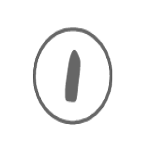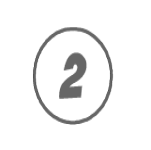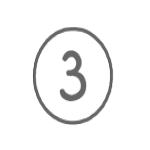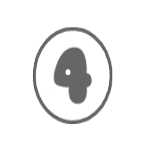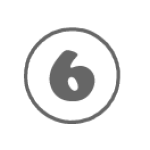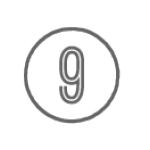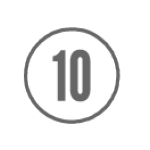How Will My Child Be Assessed?

How will my child be assessed?
Assessment is used to monitor student progress and achievement. The three main types of assessment are: diagnostic, formative and summative.
What types of assessment are there?
There are three main types of assessment and they relate to how the assessment is used.
Diagnostic
Diagnostic assessment is used to identify student strengths and weaknesses. It may be used before or during a learning cycle to pinpoint where to provide support.
Formative
Formative assessment is used to monitor student progress during a teaching and learning cycle. It can be used to give a student feedback about how well they have performed or what they need to do to improve. It can also help a teacher judge how much students have learnt and whether all students are able to show their ability.
Summative
Summative assessment is used to make a 'final' determination of student achievement. It usually comes at the end of teaching and learning cycle. The length of a teaching and learning cycle may vary. Summative assessment should enable students to show their ability.
The Principles of Assessment
The assessment principles have been informed by the most recent research into best practice in assessment and the impact of assessment in improving student learning. All schools are required to consider the Principles of Assessment when developing school-based curriculum and assessment policies. The Principles of Assessment are:
-
Assessment should be an integral part of teaching and learning
-
Assessment should be educative
-
Assessment should be fair
-
Assessments should be designed to meet their specific purposes
-
Assessment should lead to informative reporting
-
Assessment should lead to school-wide evaluation processes
For further information visit the Principles of Teaching, Learning and Assessment page of the Western Australian Curriculum and Assessment Outline.
What does assessment look like in a classroom?
There are many strategies teachers use to assess students. Some examples of assessments can be found below.
Visual representations
The demonstration of learning through maps, tables, graphs, diagrams, posters, brochures, photographs and other digital media (e.g. slides, animations, blogs).
Conferences
Discussions or interviews with students that are conducted either face-to-face or via audio and video recordings.
Field-work and practical (authentic) tasks
The demonstration of learning through activities, such as virtual and actual fieldwork; community service programs, such as fundraising; creating models; and product design and development.
Written work
This includes short and extended written tasks. These may take the form of short responses, such as worksheets and sentence or paragraph answers. Longer responses may include essays, information reports or imaginative texts, such as narratives and journal entries. Students may also conduct inquiry tasks in which they must develop questions; gather, analyse and evaluate information; communicate on findings and reflect upon conclusions.
Observation
Ongoing and first-hand observations of student learning, documented by the teacher (can be conducted both informally and formally).
Portfolios
A formal collection of student work, often with a reflective and planning element that is used to ‘showcase’ a student’s learning progress and achievements.
Videos or audio recordings
The recording of student achievement in physical and verbal activities such as role-plays, performances, speeches, play-based learning or debates.
Performances or oral presentations
The demonstration of learning through practical performance, role-play, speeches, simulations, debates and structured discussions.
Graphic organisers
The demonstration of learning through making connections, showing relationships and concept mapping of student knowledge.
Tests and quizzes
These may include verbal questioning, multiple choice, short-answer responses or open-ended questions that require longer, sustained written responses.
Group activities
Cooperative activities that provide opportunities for individual and peer-learning. During group work, teachers may stop at key points to check individual student understanding.
Assessing against the Achievement standards
Teachers are required to use the Achievement standards to assess student progress.
The Achievement standards describe an expected level that the majority of students are achieving or working toward by the end of that year of schooling. Some students will have progressed beyond the Achievement standard, others will need additional support. The expected standard for each year is described as ‘C’ or ‘Satisfactory’.
The Achievement standard for each year level can be found as part of the syllabus for each learning area.
Year 11 and 12
Every student studying a WACE course must be provided with the:
- school’s senior secondary assessment policy
- syllabus
- school’s course outline
- school’s assessment outline.
The school's course outline and the school's assessment outline are developed by the teacher/s based on the current syllabus.
Each school is required to develop a senior secondary assessment policy which provides information to Year 11 and Year 12 students, their parents/guardians/carers and teachers on the following:
- how the required curriculum and assessment documents will be provided to students
- security of assessment tasks
- rules for the conduct of school examinations and externally set tasks
- assessment of students who do not complete the assessment program
- procedures to be implemented if assessment is affected by a catastrophic event
- assessment of students with special educational needs
- reporting of student achievement
- authentication of student work (including cheating, collusion, plagiarism, appropriation, etc.)
- assessment of students transferring between courses and/or units
- assessment of students transferring between schools
- retention and disposal of student work
- assessment review and appeal processes.
The syllabus and sample course outlines and assessment outlines can be found on the relevant pages which can be accessed from the syllabus and support materials page of the Years 11 and 12 website.
The school is required to provide Year 12 students with the final school mark and grade submitted to the Authority and with the opportunity to query their school assessment and resolve any issues which may arise.
For more information see the WACE Manual and the Year 12 Information Handbook.
ATAR course examinations are developed and conducted for all Year 12 ATAR courses.
The School Curriculum and Standards Authority sets, administers and marks the ATAR course examinations.
Students who are enrolled in a Year 12 ATAR course pair of units are required to sit the ATAR course examination in order to complete the course. There are both written and practical examinations for some ATAR courses.
Note: for ATAR courses with practical components, students must complete both the written and practical examinations.
The Year 12 Information Handbook contains important information for Year 12 students and their parents/guardians/carers. The handbook is published in two parts. Part I is for all Year 12s and is published early in Term 1. Part II focuses on the ATAR course examinations and is published early in Term 3.
The examinations page on the Year 11 and 12 website has useful information for students and their parents/guardians/carers about topics such as timetables and university entrance.



